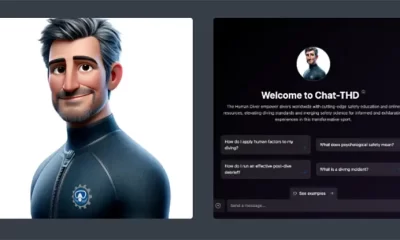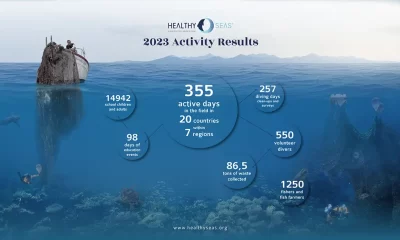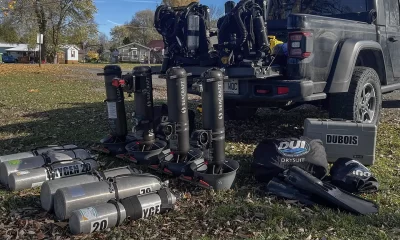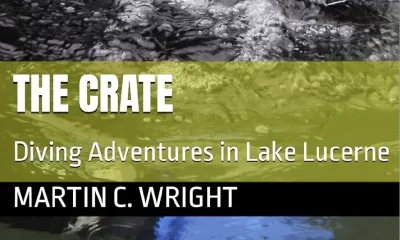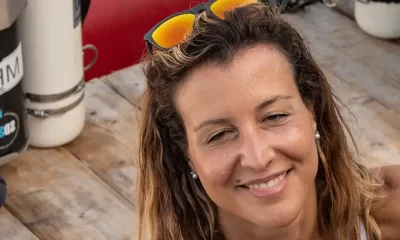Exploration
A Report on Greece’s Vickers Wellington Wreck
by Marinos Giourgas
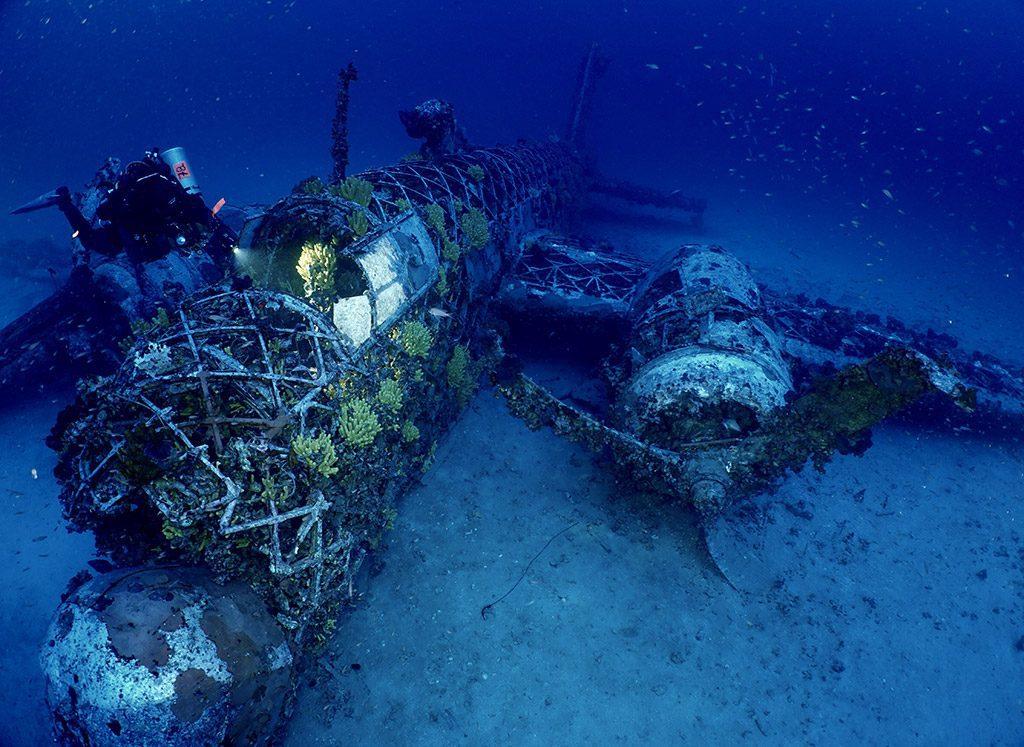
Sifnos Island, November 1943
Eighty years ago, in the afternoon of November 7th 1943, the preparations in the base of the 30th Wellington Squadron in Berca, Libya were in full swing. The Germans had occupied the islands of Kos and Rhodes and they were advancing towards the island of Leros.
At 20:00 a formation of Vickers Wellington MK XIIs originating from the 38th RAF Squadron took off with the mission to lay mines in the Aegean Sea. The airplane with the code MP.705 and a crew of six took off in order to mine and block the entrance to the port of Naxos Island. The aircraft was also navigating the squadron but because of bad weather it lost contact with the rest of the airplanes and ended up carrying its mission on its own under the heroic command of Canadian Captain F/O Robert (Bob) Watson Adams (J/12210 RCAF).
The aircraft managed to reach the island of Naxos and dropped a number of bombs and mines next to the port of the Greek island thus accomplishing its mission. However, during the operation the right engine was hit by German anti-aircraft fires but luckily it kept running for another 10 minutes. This gave the captain and its crew enough time to ditch the aircraft safely in the sea about half a mile off the bay of Chrisopigi, in the South East of the nearby island of Sifnos.
All six crew members managed to escape through the hatch and made it to land using the airplane’s life raft. The next morning the locals discovered the six men and after the first moments of distrust and suspicion they hid them initially inside a cave, located on the top of the mountain in Sifnos and then in the Monastery of the Holy Mother where they stayed for ten days.
The chief of Sifnos Police, Dimitris Bakeas, determined not to let the Germans capture the heroic crew of the Vickers Wellington, organized their trip to the island of Serifos in a fishing boat. There they joined a group of five British commandos spying on the Germans and stayed with them inside a sheep shed for twenty days, before the British Royal Navy ship with the code name LS2 (Levant Schooner 2) disguised as a Greek fishing vessel took them to the island of Cyprus. The fascinating story of the crew and the efforts of the locals to lead them to freedom was the theme of a 1966 documentary that in the ponderous English television of that era also tells the story of a Canadian who returned to Sifnos to thank islanders for having saved him during the Second World War.
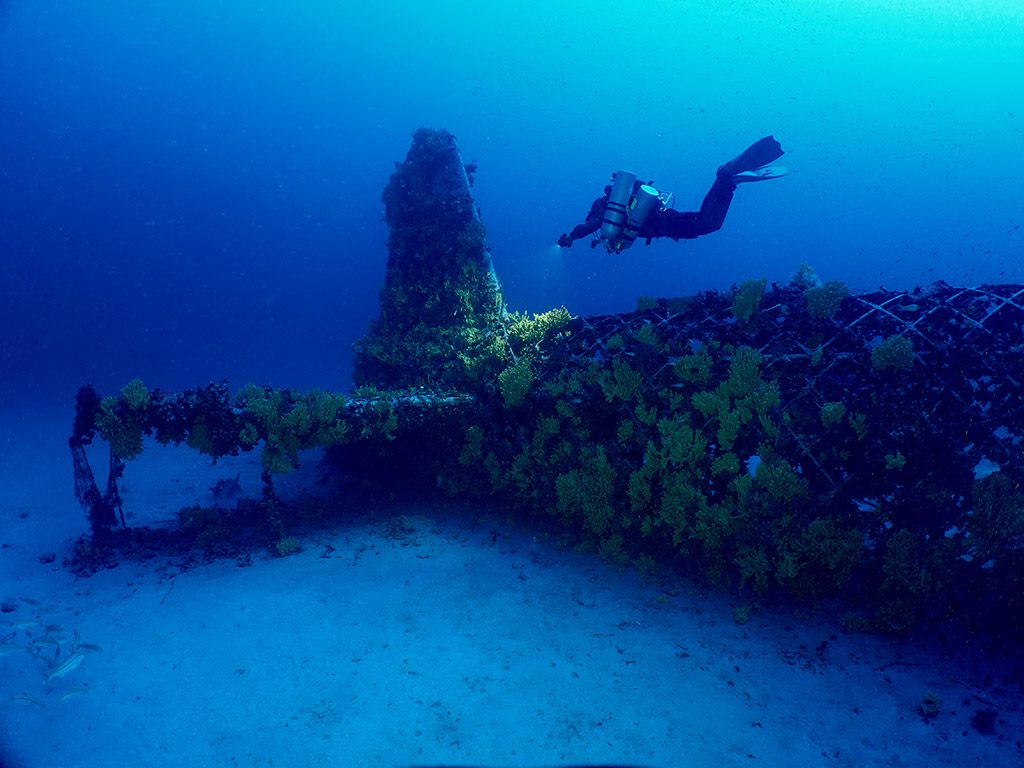
Sifnos Island, October 2023
In October 2023, UFR TEAM Underwater Filming & Research (UFR) and AegeanTec joined forces and participated in the efforts of the Municipality of Sifnos to highlight the Vickers Wellington wreck that was discovered after the war and dived for the first time in 2014 by divers of N. Vasilatos’ team. Rebreather divers, underwater researchers and historians worked together to examine the state of the wreck today and produced a series of images and videos to promote the maritime heritage of the Greek waters.
We were interested in hearing the impressions of experienced technical divers after diving the Wellington wreck so that we get an idea of what they would think of this technical diving site. For that reason, we invited Ian France, renowned technical diver, explorer and instructor trainer and Yana Stashkevich from the UK to join us and take part in the expedition. Mr. G. Karelas was with us to provide information based on his vast experience not only in diving but also in researching historic wrecks. V. Mentogiannis and K. Katsioulis from UFR were our surface support team, operating the ROV as well.
Our photographer V. Spyropoulos produced images and video footage for the presentation required by the Municipality of Sifnos. I had the privilege to coordinate the dives to this fascinating wreck with a team of experienced and competent divers and organized the logistics for our underwater time. We planned our dives with 30 minutes of bottom time to collect the necessary material for editing and in the meantime the ROV operator was filming the dive and the site of the Wellington to document it in the most effective way.
During our dives there was no current, the visibility was +25m and the clarity and light of the waters in the Aegean Sea allowed us to see the full wreck during the descent from about 40m. The wreck rests in one piece at 74m on the seabed of the Aegean Sea and is covered with nicely colored soft corals and marine organisms. The Wellington is not a big airplane (length: 19,69m, wing span: 26,27m) however the site of its geodetic airframe fuselage structure that remains intact after 40 years is impressive. The frame used to be covered with Irish linen, treated with layers of dope forming the outer skin of this British twin-engined, long range medium bomber.
The idea behind this design was to save weight so that the aircraft could carry the load of bombs, mines and the fuel required for its missions. Nowadays, after all these years resting on the seafloor there are no sections of the outer skin remaining on the plane. Navigation and communication components (radar and antenna) are still attached on the upper section of the Wellington with only the rear section of the radar laying on the seafloor next to it, possibly because of a fish tool movement.
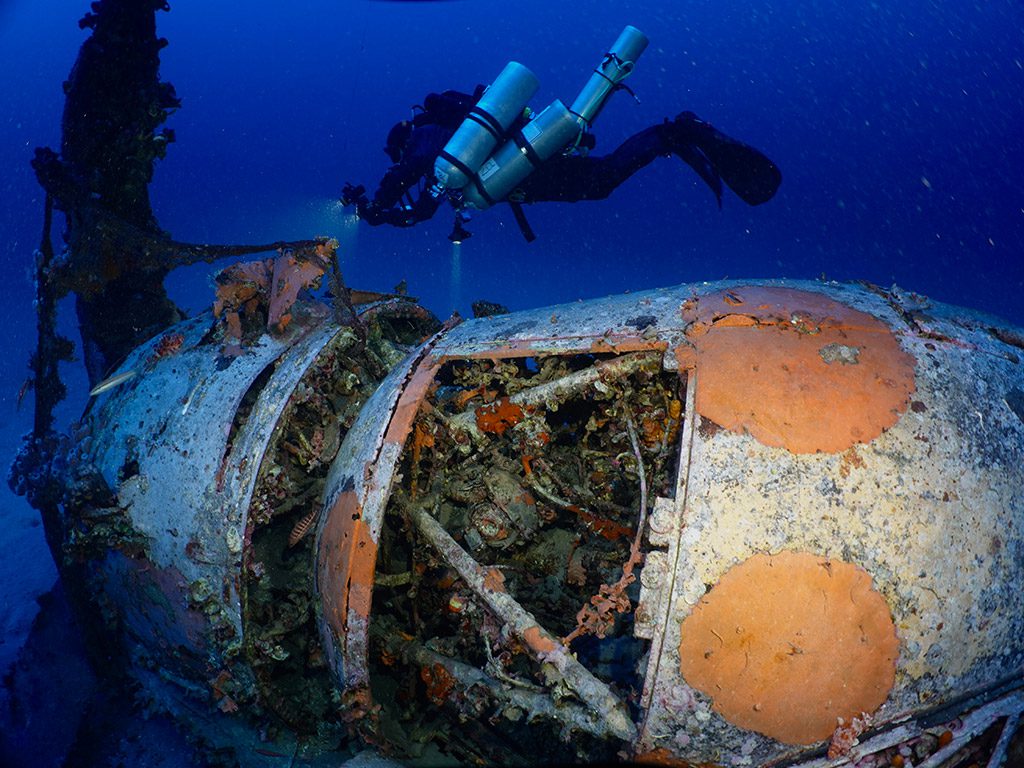
A Dive into History
The engine on the right is partially covered with a fishing net and all propeller blades are distorted since most probably the engines were running when the pilot ditched the plane in the sea. The nose turret with both its 6–8× .303 Browning guns facing down is still part of the structure indicating that the ditching was performed in a very smooth way. However, the top section of the turret in the rear segment has been detached from the structure and is now facing the seabed.
This is a very rare finding and its state will attract tekkies from all over the world. Additionally, the conditions of the Aegean Sea where clarity and light are in abundance makes this dive a pleasant experience for all divers who enjoy visiting the relics of the past. No doubt the story of the heroic crew which successfully carried out their mission without any escort or support from the other airplanes of their Squadron and their struggle to get back to their base after the aircraft was shot down by enemy fire, offers an extra reason to visit this beautiful and enthralling wreck.
The seabed of the Greek Seas is a resting place for thousands of interesting wrecks and they all have a story to tell. Of course, there are the iconic wrecks of the HMHS Britannic, SS Burdigala, or the HMS Perseus that everybody is aware of, but these are just the tip of the iceberg. One must be aware of the vast number of other beautiful and interesting wrecks that are hidden underwater in the area. And now that there are dive centers with experienced deep diving guides offering their services in a safe and professional way it is time to make these wrecks known to the international technical diving community.
DIVE DEEPER
YouTube: This song belongs to freedom – (Sifnos 1943 -1966)
The Sifnos Chronicler: Sifnos in World War Two a Tale
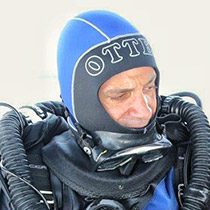
Marinos Giourgas is an active PADI and IANTD technical and rebreather diving instructor based in the southern coast of Athens, Greece, and a brand ambassador for Otter Drysuits. He started his diving career in the 90s and since then his enthusiasm to connect with nature and his passion about adventure and WW1 & 2 wrecks made it possible for him to participate in several expeditions in the Greek Seas to discover and explore the underwater relics of the past.
He is the founder of AegeanTec, a team of passionate divers offering Technical, Trimix and CCR diver training and manages the technical diving section of one of the biggest dive centers in the area, providing training and guiding tekkies to unspoilt dive sites that only few – if any – will ever see. Free time for him means alpinism and mountain bikes…



















